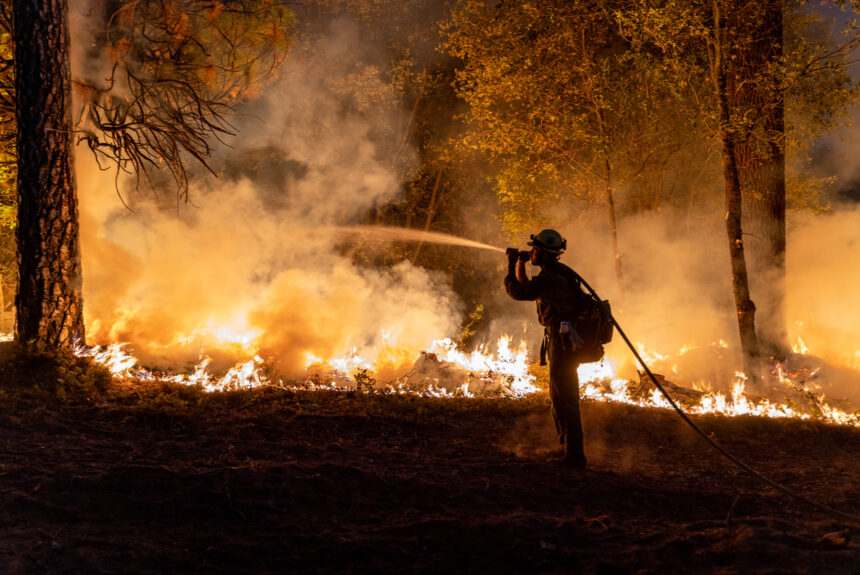Five wildfires continue to rage throughout Los Angeles, tragically claiming five lives and more than 2,000 homes and businesses. As of Thursday morning, more than 137,000 people have evacuated their homes. Unsurprisingly, the politicization of wildfires has already begun, with politicians quickly blaming climate change or other policymakers for mismanaging forests. While there is still much to learn about what started the fires, some important context is necessary to better understand the impact of these wildfires, the role of climate change, and opportunities to mitigate future economic and environmental costs. I covered much of this in testimony before the Senate Budget Committee in March of 2023.
One of the first questions many people ask (and some completely dismiss) is climate change’s role in these fires. According to some reports, one would think it’s the primary cause. ABC News said, “Climate change has played a major role in the unprecedented wildfires that are raging through Southern California.” It was not until the 12th and 13th paragraphs (the last two paragraphs, after several pictures and ads) that the same article says, “But climate change was not the primary factor that led to the severity of the wildfires. A perfect storm of weather and climate conditions, such as Santa Ana wind gusts up to 100 mph and low humidity, allowed for the rapid spread of the flames.”
Deconstructing and determining the exact impact of human-induced warming on wildfires and fire weather is sometimes relatively straightforward and sometimes very complicated. Climate change has made parts of the country and the world hotter and drier; lengthening wildfire seasons and continued warming will exacerbate those conditions. In the U.S., western states have become hotter and drier; their wildfire seasons are longer and will likely grow even longer.
One study out of UCLA estimates that the number of days with extreme fire weather in the fall has more than doubled over the past 40 years. A 2021 article in Ecological Applications noted, “Although high severity fire was a component of many historical fire regimes, the frequency and extent of high severity fire over the past few decades is outside the range of historical range of variability.”
>>>READ: Kodoma Systems Is Leading the Way to Healthier Forests
Soil moisture and wind strength are two elements of fire weather that affect the intensity of fires and fire seasons. California is very dry right now, contributing to the problem’s severity since the region has seen little rain in the last few months. However, climatologist Patrick Brown notes that there is “little evidence that climate change would be responsible for a lack of precipitation like this.”
As mentioned, the Santa Ana winds cause the most catastrophic losses because they make fires difficult to contain and more likely to reach places where people live. California is known for intense winds – the Diablo winds in the north and the Santa Ana winds in the south. A 2019 study in Geophysical Research Letters shows that warming could reduce the frequency of the Santa Ana winds in the spring and fall. The research notes that as precipitation patterns change, such changes in wind patterns “suggest a later wildfire season in the future.”
The fuel load, land use, and development are vital and often the dominant contributors to wildfire size and intensity. The fuel load is anything that can burn, from grass, shrubs, and small trees to dead leaves and materials on the forest floor. When a fire occurs in a forest with a full fuel load, the fire races up the trees and rages across the canopy, making a fire much more intense and widespread and, therefore, much more difficult to contain. These forests become tinderboxes without proper management, whether through prescribed burns or mechanical thinning.
>>>READ: Biden Says There’s a Wildfire Crisis, But Opposes A Common-Sense Solution
The vegetation where these fires occur is different from a dense forest. Pictures of Runyon Canyon Park, Hollywood Hills, and elsewhere show a lot of chaparral shrubland. Brown writes, “You can still do mechanical brush removal and prescribed burning fuel treatments, which reduces fire danger but comes at a cost to ecosystems.”
Population growth, where people live, and housing policy all affect the likelihood and cost of wildfires. More people have moved to the Wildland Urban Interface (WUI), where development meets forests and wild vegetation. A June 2022 FEMA and U.S. Fire Administration report stated that 99 million people live in the WUI, and 46 million homes with an estimated $1.3 trillion in value are at risk of wildfires. In California alone, there are 140,000 state-subsidized housing units in the WUI. People may want to be closer to nature or live where houses are more affordable. Remote work and more people retiring could likely increase migration to the WUI. Not only does that increase the number of people and structures at risk, but it also increases the probability of ignition from cars, campfires, utility lines, etc.
As I wrote in my testimony, active forest and vegetation management will reduce communities’ wildfire risk. Furthermore, using satellites, cameras, drones, artificial intelligence, predictive algorithms, and other innovative technologies can help prevent and detect wildfires – and help with timely communication with residents. Making homes more fire-resilient is another cost-effective measure. Welcomingly, policymakers at the federal and state levels are turning their attention to prevention, leaning into the expression: an ounce of prevention is worth a pound of cure.
>>>Want to learn more about these wildfires? Watch Nick Loris on C3 Solutions’ YouTube here.
The views and opinions expressed are those of the author’s and do not necessarily reflect the official policy or position of C3.
